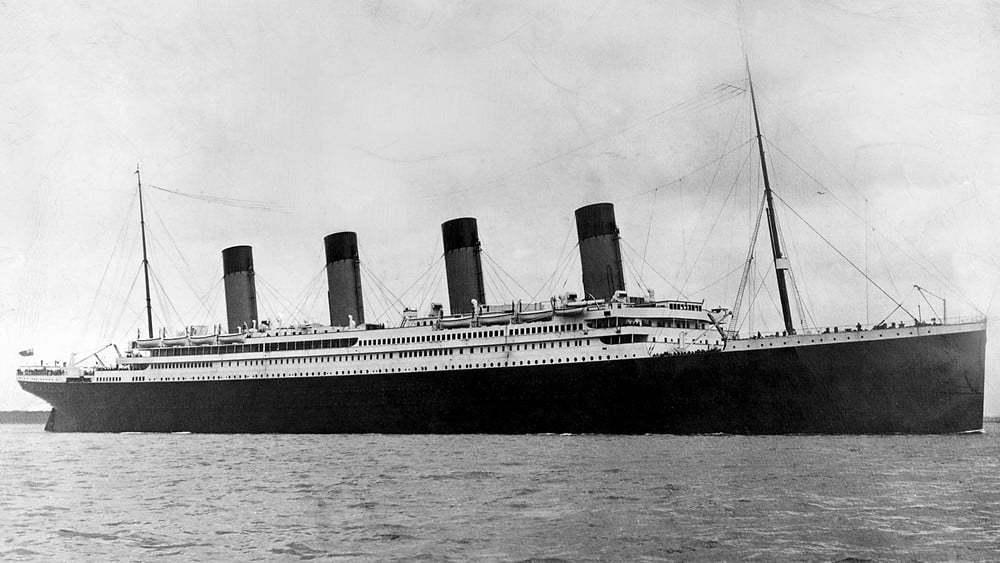The RMS Olympic, much like the Titanic, was designed by Thomas Andrews and built alongside the Titanic in the mammoth Gantries of Harland & Wolff’s shipyards. The Olympic was completed and launched on September 20, 1910, almost twelve months before her infamous sister ship, and she had a successful maiden voyage on June 14, 1911. But do you know what happened to the RMS Olympic?
During WWI, the Olympic, Titanic’s sister ship, was pressed into Navy service as a troop carrier. Olympic spotted a surfaced German U-boat in May 1918 and rammed it, forcing the U-boat crew to abandon ship. For the attack, its captain received the Distinguished Service Order.
The Titanic and the Olympic
Olympic was designed for a different clientele than Titanic and lacked the lavish attention to detail, craftsmanship, and luxury that Titanic would later provide. Olympic was a grand ship for her era, with many cutting-edge features that elevated her above her peers.
On her maiden voyage, Bruce Ismay noticed that the open deck space on B deck was too large and that few passengers were using it. He quickly corrected the situation by ordering that the RMS Titanic’s plans be changed to add more cabins to the promenade deck to create more passenger space.
Following the Titanic disaster, Olympic returned to the Harland and Wolff dry-dock for various safety improvements, including all-aboard lifeboats. Olympic returned to Belfast in October 1912 to install an inner watertight skin.
The Olympic was the first of three sisters and was originally outfitted with the same styles and graces as the Titanic, except for the Promenade decks, which were only half-length.
The majority of the Olympic interiors have been extensively photographed. In fact, because the Titanic was not in service long enough for the press to gain access to her, most books on the subject contain images from the Olympics rather than the Titanic.
In many ways, the Olympic’s demise marked the end of Titanic’s tangible life. Savvy collectors bought many items from her that are now highly sought after.
Olympic was scrapped two years after her final voyage on April 12, 1935, which was the anniversary of Titanic’s maiden voyage two decades earlier. (Source: Ultimate Titanic)
The Collision with the Hawke
Olympic’s first major mishap occurred on her fifth voyage on 20 September 1911, when she collided with a British warship, HMS Hawke, off the Isle of Wight. The collision occurred as Olympic and Hawke ran parallel to each other through the Solent. As Olympic turned to starboard, the wide radius of her turn took the commander of the Hawke by surprise, and he was unable to take good avoiding action. The Hawke’s bow, which had been designed to sink ships by ramming them, collided with Olympic’s starboard side near the stern, tearing two large holes in Olympic’s hull.
Above the waterline, it was causing flooding in two of her watertight compartments and a twisted propeller shaft. HMS Hawke suffered severe bow damage and nearly capsized. Despite this, Olympic could return to Southampton on her own, with no serious injuries or deaths. (Source: Ultimate Titanic)
